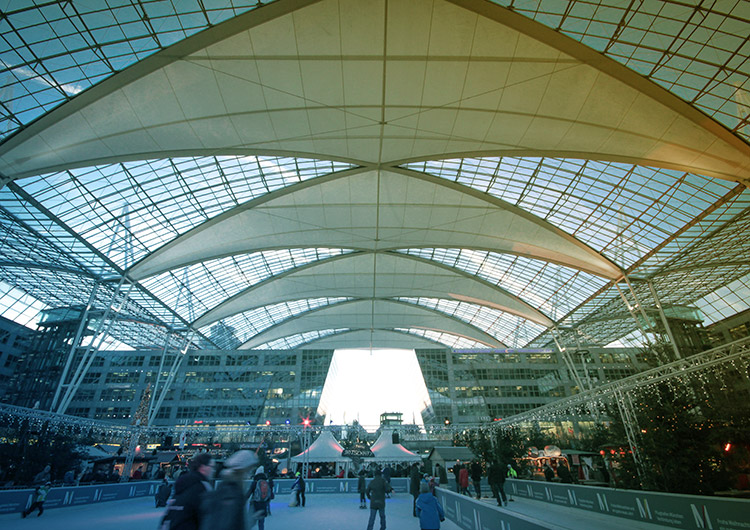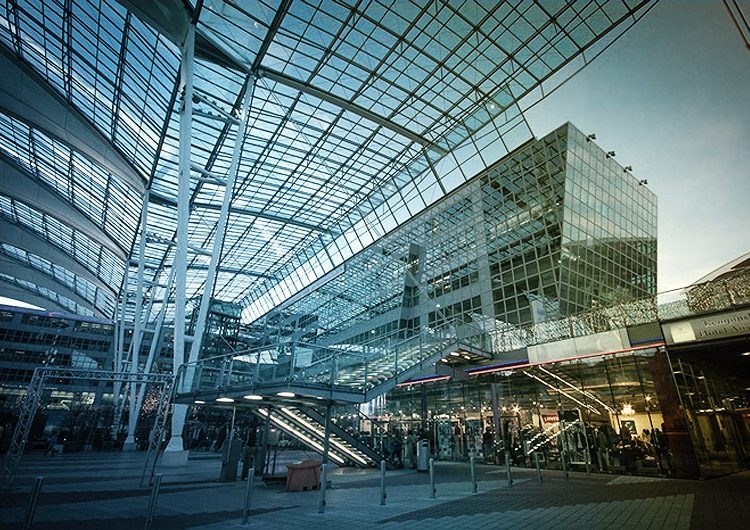M&P’s scope of services
In each of the five international airport projects supervised by us, the interaction between our consulting, engineering and IT experts is the key to success of sustainable change.
Vast surfaces and building complexes, thousands of employees, an increasing passenger volume and more than 100,000 tons of cargo a year. Germany’s international airports face a number of challenges. The successful ongoing development of these large and complex businesses is dependent on actors who can see the big picture M&P’s experts.
Airports are hubs for trade and tourism. On-site projects make stiff demands of our team. Surface areas and properties are of major strategic importance when it comes to optimally preparing the infrastructure for flight operations and retail. Furthermore, there is a lot of technology and a high in-house share of maintenance work and of operations as well as very flexible surface area and rental concepts.


More added value through networked consulting
This is a particular challenge – and a prime example of M&P’s interdisciplinary competence. At each of the five international airports supervised by us, the interaction between our consultants and engineering and IT experts is the key to success of sustainable change. Simply having lean and digitalised processes alone is not enough: carefully selected diligent employee and manager training courses are likewise needed to ensure success.
A higher level of productivity, clearly assigned priorities and the courage to throw anything overboard that no longer serves any purpose, this is the basis for making an airport fit for tomorrow. Investments in the future can be fully financed from the savings made today. This is dependent on managers and employees being courageous enough to take on board new developments. And a professional change process, for which M&P is responsible.
The advantages for the airport:
- the long-term shift in the staffing model towards better qualified employees with future-proof tasks.
- a higher level of in-house productivity in all optimised areas.
- unleashing of potential for improving energy efficiency and the supply situation as the basis for dynamic growth.
- more clearly focused third-party contracts and, by extension, lower costs.
- digitisation of core processes in maintenance, fault processing and construction management, with a significantly higher level of transparency, process reliability and effectiveness.
- a clearer definition of roles, responsibilities and the necessary degree of maturity in cooperation improves interdisciplinary cooperation in the long term.
- targeted measures for the further digitisation and optimisation of SAP and complementary systems.
The demands made of the project and the employees:
- design thinking as the basis for a successful project setting.
- openness to change and mutual trust among all project participants.
- pioneer for testing and positively promoting new working models.
- change in mindset: from a service provider to a business partner with an “entrepreneurial attitude”
- interdisciplinary and highly networked project team.
- putting aside personal interests.
- interaction between generalists and experts.
- creativity and innovative thinking as well as execution expertise.
To ensure the project quickly reaches maximum altitude, we have – in our consulting model – combined new project methods, such as “flexible and concept-based realisation” with business case calculations and performance benchmarks as well as intelligent concepts for the compensation of third-party services through in-house activities.
